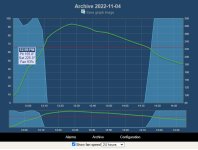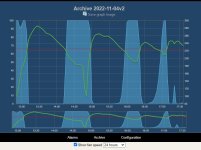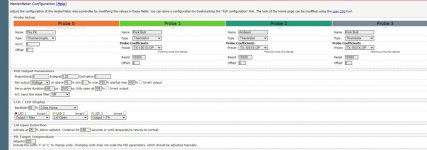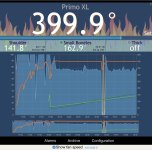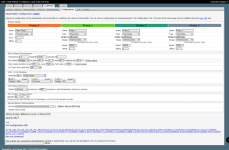Hello all,
I have recently had some serious difficulties maintaining temperatures and stuff while using my Primo Oval XL with a heatermeter connected. A buddy of mine also has the same grill with a heater meter, and we tried his out, and then mine out using the exact same parameters on his grill. His worked just fine, and mine let the fire go out multiple times. My graphs are attached, and he will post his in a reply. Can anyone give me some guidance on why this is happening?
I am going to adjust my parameters on the heatermeter, and do a test run on my grill, and see how it goes (with presumably updated parameters).
Any help would be appreciated.
Thanks.
I have recently had some serious difficulties maintaining temperatures and stuff while using my Primo Oval XL with a heatermeter connected. A buddy of mine also has the same grill with a heater meter, and we tried his out, and then mine out using the exact same parameters on his grill. His worked just fine, and mine let the fire go out multiple times. My graphs are attached, and he will post his in a reply. Can anyone give me some guidance on why this is happening?
I am going to adjust my parameters on the heatermeter, and do a test run on my grill, and see how it goes (with presumably updated parameters).
Any help would be appreciated.
Thanks.

